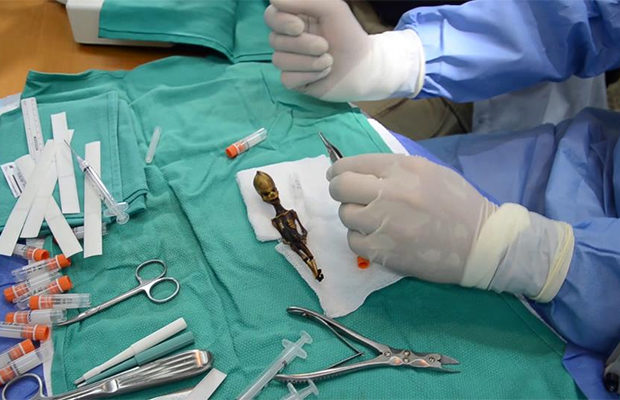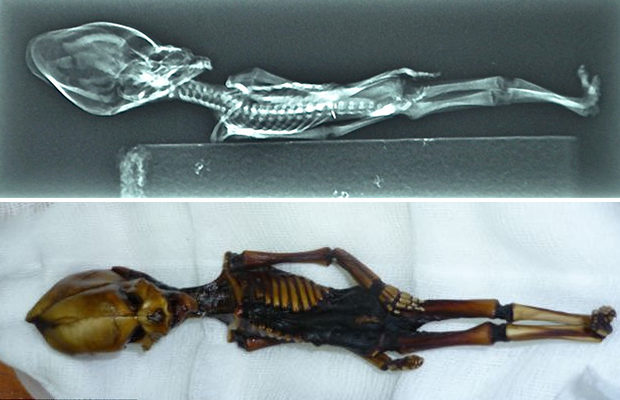Back in 2003, a Chilean man named Oscar Muñoz found a strange miniature skeleton called Ata, near an old church in the deserted town of La Noria, located in the Atacama Desert.

It was first featured in TV shows and a documentary, “Sirius,” in which a UFO researcher attempts to figure out Ata’s origins.
The 15cm long structure appears to be a complete human skeleton, and the primary DNA analyses indicated that it was a female human body.
There are several theories about Ata’s mutation, size and shape. Most of them suggest Ata was a human fetus born too prematurely for survival. Whereas, other fascinating theories suggest that the skeleton could be the remains of an extraterrestrial being.

According to sources, scientists conducted tons of studies and exams on Ata, but they couldn’t unravel the complete mystery surrounding this strange miniature skeleton.

While in March 2018, the authors of a study based on five years of genomic analysis stated in the journal Genome Research that “Ata is human, albeit one with multiple bone disease-associated mutations.”
The study further states, the fetus had a rare bone ageing disorder, as well as other genetic mutations in genes associated with dwarfism, scoliosis, and abnormalities in the muscles and skeleton.
The researchers have identified 64 unusual mutations in 7 different genes linked to the skeletal system, and they noted to find various mutations that specifically affect skeletal development have never been reported before.
Nowadays, the remains have been placed in a private collection in Spain, and the current owner is Ramón Navia-Osorio, a Spanish businessman, who had bought this peculiar piece from Oscar Muñoz.




